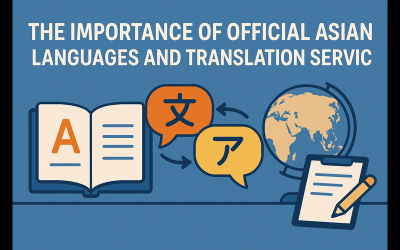Even in the rampant times of digital text, the translation of handwritten texts holds an original value that is hard to derive from other sources. From historical documents to personal notes, the need to translate handwritten texts has remained, and understanding the subtleties involved is important. The focus of this blog post is to delve into aspects of the translation of handwritten texts, including their importance, challenges, and how they will be shaped by technological advancement.
The Need for Translating Handwritten Documents
Handwritten texts hold a special place in our history and daily life. Historical manuscripts, private letters, and even notes from meetings or lectures often exist in handwritten form only. On that note, the reasons why accurate translation of these texts is important are several-fold:
- Preserving History: Most historical documents are handwritten. Translation of these documents helps in preserving our past and giving insights into the culture, language, and thoughts of previous generations.
- Distinctive Touch: Handwritten letters and notes usually contain an individualized touch that digital text lacks. Translation of such texts preserves the distinctive touch and sentimental value they hold.
- Legal and Academic Relevance: Translation of legal documents, such as wills or contracts, and academic documents, is required for legal purposes or scholarly needs. In any case, it has to be accurate if it is to serve any useful purpose.
Challenges in the Translation of Handwritten Texts
The translation of handwritten texts raises a host of issues not shared with translating either printed or digital text. Some of the challenges to expect include:
- Variability in Handwriting: Handwriting styles vary from one individual to the next. Factors affecting it include cursive versus print, legibility, and even letter formation.
- Aging and Deterioration: Most of the old handwritten documents are aged or damaged, with faded ink and torn pages, thus making their translation more complicated.
- Contextual Interpretation: Handwritten texts often have idiomatic expressions and colloquialisms; abbreviations require contextual understanding. Herein, besides language fluency, the translator has to be very well aware of the cultural and historical background of the text.
The Challenge of Translating Doctors’ Handwriting
Translating doctors’ handwriting, particularly in notes and handwritten prescriptions, is a critical yet challenging task. Medical professionals often write quickly, resulting in illegible or hard-to-decipher text. Medical document translation is essential for patient safety, ensuring that prescriptions are correctly interpreted and that patient care instructions are clearly understood. Utilizing both human expertise and advanced technologies like OCR can significantly improve the accuracy and efficiency of translating these crucial medical texts.
Technology in Translation of Handwritten Documents
Improvements in technology are changing the nature of translating handwritten texts. Though the human touch is indispensable, some tools or technologies currently assisting the translation process include:
- Optical Character Recognition (OCR): OCR has dramatically improved. A few systems are even capable of recognizing and digitizing handwritten text. This technology makes the initial transcription easier, making the text more accessible for translation.
- Machine Learning and AI: Artificial intelligence and machine learning algorithms are trained to learn and understand distinctive styles of handwriting. This technology may assist the translator with preliminary drafts or help in identifying especially hard-to-read parts.
- Digital Archiving: Digitizing a vast collection of handwritten documents not only preserves them but also eases the tasks of analysis and translation. Digital archives offer a common platform for translation projects and protect documents from physical decay.
Best Practices
With the difficulties involved and the need for accuracy, certain best practices can help improve the quality of the translation of handwritten texts. This usually starts with a proper analysis of the document before translation, normally to understand the context, purpose, and any peculiarities of the handwriting; this provides the foundation for the first step toward an accurate translation.
- Collaboration with Experts: Working with professional translators and linguists can help ensure the accurate translation of handwritten documents.
- Technology Use: OCR and AI can assist in transcribing and translating the content. These tools save time and increase accuracy, especially when handling large volumes of text.
- Attention to Detail: Note the specifics of the handwriting itself, including unique letter formations or stylistic elements. These details are crucial for accurate interpretation and translation.
- Verification and Validation: After completing the translation, verify and validate the text’s accuracy. This can be done through cross-referencing, consulting experts, or using additional technological tools.
The Future of Translating Handwritten Texts
The future of translating handwritten text looks bright, with ongoing technological improvements and increasing awareness of the importance of preserving handwritten texts. Once OCR and AI technologies advance further, the process will become more efficient and accurate for translating handwritten documents.
Digital archiving and collaborative platforms will also improve access to and sharing of handwritten texts, ensuring more comprehensive and accurate translations. Human translators, however, will remain vital for interpreting context and cultural nuances that no technology can fully capture.
Conclusion
Translation of handwritten texts is one of the most important areas, as it bridges the past and present to allow future generations to preserve and enjoy the richness of handwritten works. With the help of modern technologies and human experiences, a closer-to-accurate and efficient translation would be possible. The translation of handwritten texts is an important art and science in furthering our understanding and appreciation of written communication, whether for the sake of preservation of history, personal connection, or use in legal and academic functions.
 Rana Maalouf
Rana Maalouf

